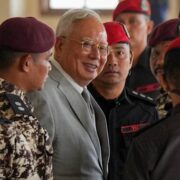Retaliation and restraint

When should a country retaliate to an attack on its territory and forces? What form should a retaliatory response take? When is restraint a preferable course of action? Questions like these suggest that conflict is a complex communication system in itself. Norms are observed even in war. No country wants to be accused of igniting an unprovoked war, of needlessly escalating a simmering conflict, or of using disproportional means to eliminate a perceived threat.
It may seem paradoxical to suppose that ethics may also apply to war. But the presumption that a third-party moral observer is watching makes it possible to see war not as an anything-goes affair but a human activity that can be kept within bounds—if not entirely ended through negotiation.
The motives and reasons for launching aggressive actions in the international arena are innumerable. These have complex origins and are often not easy to control. Yet, interstate and regional conflicts pose multiple problems for the rest of the world. They trigger dislocation and migration. They cause disruptions in the global supply chain. Foreign workers are forced to return to their home countries. Neighboring nations and treaty allies are sucked into conflicts they don’t desire.
In today’s world, maintaining global peace is the moral and political mandate of the global institutions that were established in the wake of World War II. The United Nations (UN), with its various affiliated organizations and agencies, is the most important of these. Through international statutes, agreements, covenants, and conventions on a variety of contentious issues, the UN has played a crucial role in promoting peace and eliminating the conditions that typically generate conflicts.
But the record has been mixed. More recently, the UN’s attempts to be the sobering voice of humanity’s collective wisdom have largely been ignored. Nowhere has this been more manifest than in its failed efforts to protect and provide for the welfare of Gaza’s civilian population which has been caught in the middle of Israel’s relentless pursuit of Hamas militants. At last count, 33,000 Gazans, nearly half of them children, have perished in this war. Countless UN workers in Gaza have themselves died in the performance of their responsibilities.
Almost eight decades have passed since the end of the last world war. Many of those who lived through the horrors of a world war have passed on. Our generation has been supremely privileged in that we have lived through a period of unprecedented prosperity and freedom, which has lifted much of humanity from poverty and oppression. Yet, we take peace for granted, and we don’t give much thought to what a nuclear war would be like. Worse, the big powers that presided over the end of the last war appear to be more concerned with preparing for another war, quick to take sides in regional conflicts and form strategic alliances, instead of calling upon the other powers to come together to strengthen the mechanisms that preserve global peace.
But, despite the grim prospects we face, all is not lost. The seeds of restraint, sown in the aftermath of Hiroshima and Nagasaki, have not all dried up. They incorporate the better angels of our nature, sublimating aggression into a ritual performance that simulates face-saving retaliation while signaling restraint.
Three weeks ago, on April 1, Israeli fighter jets fired missiles at a building complex inside the Iranian embassy in Damascus, Syria, killing seven high-ranking officers of Iran’s Islamic Revolutionary Guard Corps, including the commander for Syria and Lebanon of the elite Quds Force. In international law, an embassy is regarded as an extension of sovereign territory. Iran therefore saw this assault on its Syrian embassy as an attack against Iran itself.
As expected, Iranian reaction was one of rage. The Iranian leadership felt that failure to retaliate would be interpreted as a sign of weakness by its own people. On April 13, Iranian forces launched a barrage of more than 300 drones and missiles aimed at Israel itself. The massive scale of this attack left no doubt about Iran’s readiness to unleash its full firepower against its longstanding enemy. But what is interesting is that days before the attack, Iran made known what it intended to do. The slow-moving drones, about 200 of them, preceded the more powerful ballistic missiles like a warning siren. As expected, 99 percent of them were intercepted in mid-air. But they had served their purpose—to demonstrate Iran’s lethal capability without inflicting actual injury.
Israel nonetheless felt the sting of enemy incursion into its territory. Ignoring other nations’ advice not to retaliate and instead passing off its interception of the Iranian drones and missiles as a triumph of its defense capability, Israel launched a targeted aerial attack on Iran’s defense system last Friday. The precision of the counterattack demonstrated Israel’s superior firepower. The limited scale of the air strikes and the minimal damage they caused signaled a desire not to escalate. Iran will likely leave it at that.
public.lives@gmail.com


















